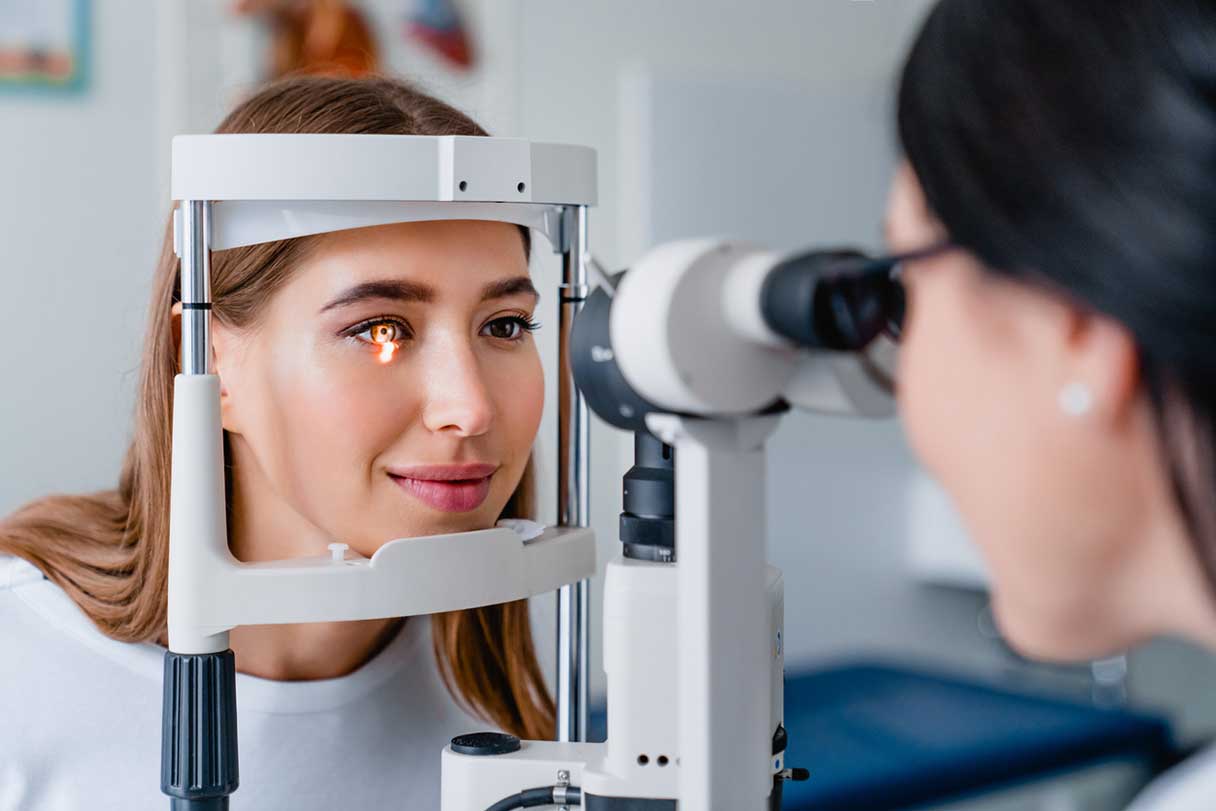Whether you're dealing with migraines, back pain, fibromyalgia, osteoarthritis or another issue, alternative pain management treatments may help decrease chronic pain and boost your overall quality of life.1 And you wouldn't be the first to seek relief from chronic pain — more than 50 million U.S. adults live with chronic pain, with about a quarter of adults between the ages of 45 and 84 experiencing persistent pain.2
Keep reading to learn more about pain management alternatives, and be sure to talk to your doctor before taking action.
1. Acupuncture
Acupuncture is a traditional Chinese medicine technique in which a practitioner inserts very thin needles through your skin to stimulate specific points on your body. This is thought to activate the flow of energy throughout your body and encourage healing. The needles may also release your body's natural opiates, which help reduce pain. Studies have shown that acupuncture may be effective in treating many different types of pain, including chronic knee, neck and back pain.2
2. Massage Therapy
This pain management treatment involves a practitioner manipulating the soft tissues of the body.2 Massage therapy can help relieve pain from muscle spasms.2 It may also help reduce stiffness and inflammation, improve posture and circulation, increase flexibility and promote relaxation.3 People with chronic back or shoulder pain may benefit from massage therapy.4
3. Meditation and Mindfulness
Meditation typically involves maintaining mental focus on a certain sensation, such as breathing, or on a mantra.2 This is often combined with mindfulness, a technique that emphasizes conscious awareness of the present moment.5 Research reveals that meditation and mindfulness can be helpful for people with acute and chronic pain.2 These techniques may help decrease pain sensitivity by changing the way the brain responds to pain.6
4. Yoga
There are many kinds of yoga, which combine physical poses, breathing exercises and meditation. This mind and body practice may help with chronic pain by reducing inflammation, increasing flexibility and decreasing muscle tension and stress. Studies have shown that yoga may help relieve chronic knee, neck and low-back pain, as well as tension headaches.2
5. Heat Therapy
Heat therapy is a common way to reduce pain, as it can help relax muscles and promote healing after an injury.7 Heat can provide relief from arthritis, tendinitis, muscle spasms, strains and sprains.8 Heat should only be applied for 15 to 20 minutes at a time.8
6. Cold Therapy
Cold therapy is a common way to reduce blood flow and the inflammation that causes pain. It can help treat osteoarthritis, gout, migraines, strains and tendinitis. You can take a cold bath or apply a cold compress to the affected area. Cold packs can be used for up to 20 minutes.8
7. Chiropractic Care
Chiropractic treatment involves manipulating the spine to improve alignment, thereby alleviating pressure on the nervous system and helping boost the body's ability to heal itself. This technique can be effective for musculoskeletal issues such as neck pain, headaches and migraines, sciatica and low-back pain.9
8. Hypnosis
Hypnosis is a state of concentration that can enable you to alter your perception of pain.10 For example, you might imagine floating comfortably in a bubble bath or applying a warm compress to the pain — any imagery that creates distance between you and the discomfort.10 Hypnosis may help relieve the pain of arthritis, tension headaches, migraines, fibromyalgia and cancer.11
9. Biofeedback
Biofeedback is a mind-body therapy designed to help you learn to respond differently to physical or psychological triggers.12 During a session, a practitioner will attach sensors to your body to monitor functions such as breathing and heart rate.12 This will alert you to your physiological responses to pain, so you can practice muscle relaxation and controlled breathing strategies to manage it better.12 Biofeedback may help relieve chronic pain from tension headaches and migraines.13
10. TENS Therapy
Transcutaneous electrical nerve stimulation (TENS) units deliver targeted electrical pulses to treat chronic pain.14 The electrical pulses can help reduce or stop pain signals in the brain.15 TENS therapy can help alleviate menstrual and postpartum pain, as well as pain from conditions such as neuropathy, knee osteoarthritis and fibromyalgia.14
11. Aromatherapy
Aromatherapy for pain management typically involves massaging a diluted form of essential oils onto the skin, breathing it in or adding it to bathwater. Essential oils are concentrated extracts of flowers, fruits, leaves or seeds that retain the natural aroma of the plant. Aromatherapy massage using essential oils such as lavender, juniper, ylang-ylang and rose may reduce the pain of rheumatoid arthritis. Inhaling eucalyptus oil may reduce pain after knee replacement surgery. Aromatherapy essential oils may also provide pain reduction for kidney stones, neck pain and labor and delivery.16
12. Tai Chi
Tai chi is an ancient Chinese practice that may be considered “meditation in motion."17 It combines slow, deliberate movements with breathing and relaxation techniques.17 Tai chi may help release stress, increase flexibility and improve muscle strength.17 Evidence suggests that tai chi can improve chronic pain from rheumatoid arthritis, osteoporosis and low-back pain.18
13. Cognitive Behavioral Therapy
Cognitive behavioral therapy (CBT) teaches you to identify unproductive thoughts and replace them with helpful ones.5 Chronic pain can change the way your brain processes pain and make it feel more intense, but CBT can help you gain control over the pain and manage the mental health challenges that may accompany it.4 CBT may reduce anxiety around pain, improve daily functioning and enhance quality of life.5
14. Physical Therapy
Physical therapy involves techniques to stretch and strengthen the muscles and joints, helping you move your body safely.19 This treatment can reduce pain and help you regain mobility and strength.19 Physical therapists may also use techniques like massage or heat or cold therapy to promote healing.19 Physical therapy may treat chronic pain associated with arthritis, bursitis, tendinitis, fibromyalgia and cancer.20
15. Art Therapy
Art therapy provides a way to express emotions and experiences not easily articulated in words, which may help relieve chronic pain symptoms. The process of making art may be considered healing in itself, promoting physical, mental and emotional well-being. In addition, using a variety of different art materials allows you to control your movements and enjoy a time of purposeful play. By providing a distraction from pain, art therapy may alleviate the perception of pain.21
16. Music Therapy
Music therapy for pain management involves individualized, active music engagement, which may include singing and chanting, songwriting, instrument playing and music-guided visualization. Studies have shown that music therapy can reduce acute, procedural and chronic pain. It can also reduce stress, enhance mood and promote a sense of control. What's more, music interventions may even reduce the use of pain medications.22
17. Sleep Therapy
Sleep therapy for pain management involves retraining your brain with healthy thoughts. Therapeutic techniques may include deep breathing, mindfulness, meditation or guided imagery to help you reconceptualize the pain, prioritize sleep and allow your central nervous system to rest. While short sleep times, fragmented sleep and poor sleep quality can heighten sensitivity to chronic pain, quality sleep can improve chronic pain over the long term.23
18. Light Therapy
Light therapy (aka photobiomodulation) is a pain management treatment that can reduce inflammation and swelling, promote healing and help restore normal cellular function. You may experience pain relief within 10 to 20 minutes after treatment with low-intensity lasers or LEDs. Evidence suggests that light therapy is a safe, noninvasive treatment for acute and chronic conditions such as neck pain, low-back pain, osteoarthritis and fibromyalgia.24
Managing Health and Wellness Costs With the CareCredit Credit Card
If you are looking for an option to help manage your health and wellness costs, consider financing with the CareCredit credit card. The CareCredit credit card can help you pay for the care you want and need and make payments easy to manage.* Use our Acceptance Locator to find a provider near you that accepts CareCredit. Continue your wellness journey by downloading the CareCredit Mobile App to manage your account, find a provider on the go and easily access the Well U blog for more great articles, podcasts and videos.
Your CareCredit credit card can be used in so many ways within the CareCredit network including vision, dentistry, cosmetic, pet care, hearing, health systems, dermatology, pharmacy purchases and spa treatments. How will you invest in your health and wellness next?
Author Bio
Robyn Tellefsen is a freelance writer and editor with more than 20 years of experience covering health and wellness, finance and more. Her work has appeared on sites such as Beachside Rehab, Wayfair, LoopNet, First Horizon Bank, SoFi, A Place for Mom, American Express, Chase and others.








